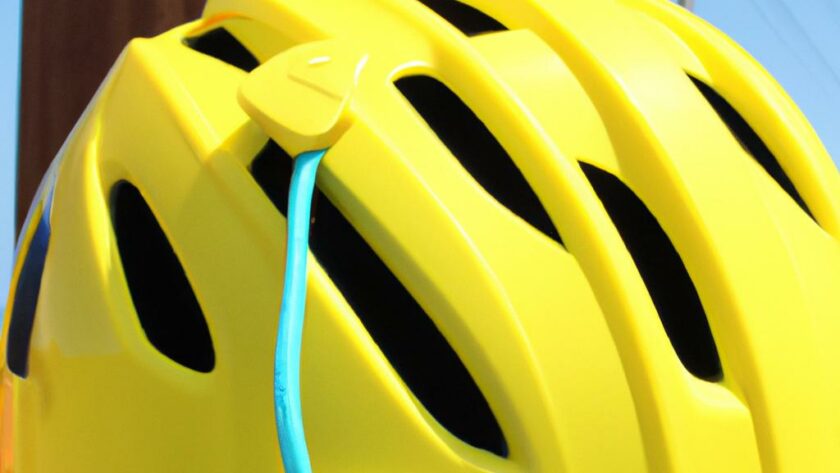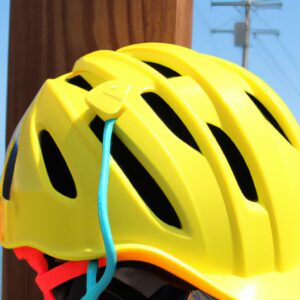Introduction to E-Bikes and Safety Overview
E-bikes are a fun and convenient way to get around. As with any form of transport, however, there are a few considerations when it comes to ensuring your safety. Before you take your e-bike out for the first time, it’s important to learn about the different types of e-bikes, how to ride them safely, and the applicable laws. Thankfully, we’ve put together this simple guide to help make the process of enjoying your e-bike as stress-free as possible.
When it comes to e-bikes, there is an array of different types available. This includes mountain and touring bikes, folding bikes, and even cargo bikes. It’s important to choose an e-bike that suits your needs in terms of size, weight and frame. Different styles of bike are better suited to certain activities, such as mountain bikes being the best choice for rough off-road terrain.
Once you have chosen your e-bike, it’s essential to dress appropriately. This includes investing in high-quality protective gear, such as a helmet and gloves. You should also look into investing in reflectors, lights and additional padding for added protection and visibility.
It’s important to familiarise yourself with the laws surrounding e-bikes, these vary from country to country. In some places, you’re required to register your bike, to carry a license or to adhere to specific speed limits. Make sure you know what you need to do before setting off.
Next, you should be aware of the basics for riding an e-bike safely. You should always be conscious of your speed, remembering not to exceed the legal limits, as well as remaining aware of your surroundings and other road users. Signal your intentions properly with arm signals and use appropriate paths and lanes.
Finally, look at regularly maintaining your e-bike. Check the pressure on the tires, brakes and chain. Invest in the necessary tools and accessories to keep it running smoothly.
Choose the Right Bicycle for You
Riding an e-bike is a great way to get around and it’s important to make sure you have the right bike for your needs. When choosing an e-bike, one of the most important things to consider is the size. Having a bike that fits you properly is essential to make sure you can enjoy a safe and comfortable ride.
It’s important to take your time when choosing the right bicycle for you. A bicycle should be the correct size for your body frame and height. Look for bikes that have adjustable components, such as handlebars, suspension, seats and other components. Before purchasing a bike, be sure to test drive it to make sure it’s comfortable for you to use.
If you’re just starting out, it’s worth investing in a quality bike that will last for a long time. Take into account factors such as the terrain you’ll be riding on, how fast you want to go, and any special features you may need—such as different gears or power levels. It’s also a good idea to buy a bike with adjustable features so you can customize it to fit your body shape and size.
Aside from size and features, there are several additional considerations to keep in mind when selecting the best e-bike for you. Think about the overall weight of the bike and whether you’ll need to carry it often. Also take into account the number of accessories available for the bike. Make sure the bike has enough storage space for a bag or basket if you plan to use it for commuting.
Buying the right bicycle is essential to ensure a safe, comfortable ride. Take your time to research the different options available and choose the model that best suits your needs. Ask questions at the store and discuss the features and benefits of each bike with the staff so you can make the most informed decision.
Invest in High-Quality Protective Gear
When riding an e-bike, it’s important to remember that protects you from any falls or accidents. Investing in high-quality protective gear is essential to keeping yourself safe.
For starters, every e-bike rider should wear a helmet that fits correctly and meets safety standards. It’s best to invest in a quality helmet so it will protect your head if you ever have an accident.
It is also recommended to wear other protective gear such as elbow pads, knee pads, and gloves. This will allow you to stay protected while riding and may even reduce your risk of injury in the event of an accident.
You should also consider investing in clothing that is specifically designed for biking. This could include pants, shoes, and jackets made from materials that will make you more visible in low-light conditions. Many of these items can also be waterproof, which will help protect you from the elements.
Finally, it’s important to check your protective gear periodically. Make sure that it is free from rips or tears and that it fits properly. You should also inspect your helmet for any signs of wear or damage that could compromise its effectiveness.
No matter how experienced of a rider you are, investing in high-quality protective gear is necessary to ensure maximum safety when riding an e-bike. Be sure to research the best options for you, and don’t forget to check your protective gear before each ride.
Understand the Laws Surrounding E-Bikes
Riding an e-bike is a lot of fun – it can take you wherever you want to go with speed and convenience. However, before you can enjoy this mode of transport to its fullest, you must understand the laws that govern electric bikes. Knowing and following these laws can keep you safe while riding, and can also prevent you from legal trouble.
In most places, electric bicycles are treated just like regular bicycles. This means that they should be ridden on the correct side of the road and obey all traffic signals. Most places also have laws regarding age limits for electric bike riders and where and when riders can ride.
It is important to note that in some places, there are different laws for electric bikes than for regular bicycles. This can include things such as weight limits, speed limits, and requirements for insurance or registration. You should check with your local government to determine the specific laws that apply to e-bikes in your area.
You should also consider the safety laws that are applicable to both electric and non-electric bikes. These laws may include wearing a helmet, avoiding riding on busy highways, and not carrying more people than the bike is designed to support.
By familiarizing yourself with the laws that apply to e-bikes in your area, you can make sure that your rides are safe and legal. Doing so will ensure that you can enjoy your e-bike without worrying about breaking laws or getting into legal trouble.
Tips on Riding an E-Bike Safely
Riding an e-bike is a fun and convenient way to get around, but it also comes with responsibility. To stay safe on your e-bike, there are certain tips you should follow.
First and foremost, wear a safety helmet and appropriate protective clothing when riding your e-bike. Make sure your helmet fits snugly and meets all the safety requirements. You should also consider wearing knee, elbow and wrist guards, as well as a reflective vest.
Be aware of the laws surrounding e-bikes in your area. Different states and countries have different regulations, so make sure you check your local laws before you hit the road. Some places may restrict where you can ride, or even disallow riding altogether.
It’s important not to ride too fast. Unexpected hazards may be hiding around corners or behind parked vehicles, so keep your speed down to ensure you have time to react. As an experienced rider, you should also look out for inexperienced riders who may be less aware of these potential hazards.
Stay alert and keep your eyes open at all times. Be conscious of other road users such as cars, cyclists and pedestrians. If you are in a group, ride single file and look out for each other. If you’re listening to music, make sure the volume isn’t too loud so you don’t miss any warning sounds.
Pay attention to the road surface as well. Poorly maintained roads can cause you to lose control of your e-bike. Potholes, gravel and uneven surfaces can all catch you off guard. Do a practice run beforehand if you’re unsure.
Finally, practice good judgment and be courteous. Follow the rules of the road and respect other road users. Don’t weave in and out of traffic or ride recklessly, and always signal your intentions properly.
Properly Maintaining Your E-Bike
Riding an e-bike safely and responsibly begins with properly maintaining your bike. This is an important step that shouldn’t be overlooked, no matter how experienced and knowledgeable you are as a cyclist. In this section, we will explain the various maintenance steps that should be taken to help ensure your safety on the road.
It is important to regularly clean and inspect your e-bike before each ride. This includes things like checking the brakes, ensuring the handlebars are secure, ensuring all the nuts and bolts are tightened and not rusted, and examining the tires for any signs of wear and tear. Make sure to also check your battery regularly and confirm that it is still functioning correctly.
In addition to cleaning and inspecting your bicycle, you should also pay attention to other elements of your bike that require maintenance. This includes lubricating the chain and any other movable components, periodically replacing brake pads, and checking the tire inflation. If you notice any issues, these should be addressed immediately.
Having a basic understanding of the different parts of an e-bike is also essential. By understanding how these components work and function, you can quickly identify any problems that may arise due to wear and tear. It is also important to have a record of all service and repairs carried out on your e-bike, as this can help you to identify any potential issues more quickly.
Finally, if you are ever in doubt about any part of your e-bike or its maintenance, it is best to consult with a professional. A qualified bike mechanic can provide advice on the best way to maintain and care for your e-bike, helping to keep you safe when out on the roads.
Be Aware of Other Road Users
When you’re on an ebike, it’s important to be aware of the other people sharing the road with you. Even though electric bikes are more powerful than a traditional bike, they can still be easily overwhelmed by bigger, faster vehicles. For your safety, it’s important to be aware of other road users and take steps to ensure that you remain safe while riding your ebike.
Be Seen
One of the best ways to stay safe on the road is to make sure that you’re seen. Wear bright colors or clothing with reflective material to make sure that your movements can be seen by drivers. If possible, equip your ebike with lights and reflectors to further increase your visibility.
Give Yourself Space
Always give yourself plenty of space when sharing the road with other vehicles. Make sure that you give cars plenty of space when passing you and leave extra space between you and them at intersections. Giving yourself space will help reduce your risk of a collision and make sure that you can react quickly if you need to.
Know Your Rights
Every state has different laws when it comes to ebike riders, so it’s important to make sure that you understand your rights and responsibilities when riding your ebike. Make sure to familiarize yourself with the laws in your state and any local regulations that may apply to you.
Be Mindful of Pedestrians
Pedestrians often have the right of way on sidewalks and crosswalks, so always be mindful of where people are walking and slow down when necessary. Additionally, use a bell or other noise-making device to alert pedestrians to your presence as you approach.
Stay Alert
No matter how long you’ve been riding your electric bike, it’s important to stay alert when out on the road. Pay attention to your surroundings and be prepared for potential hazards such as potholes or debris on the ground. Be aware of the traffic around you and be ready to react quickly if needed.
Overall, being aware of the other road users while riding your electric bike is vital to your safety. By following the tips above, you’ll be able to stay safe while riding your ebike. Make sure to always keep safety in mind, wear protective gear, obey the laws and be courteous to other road users, no matter what type of vehicle they are driving.
Control Your Speed
When riding an e-bike, it is important to always make sure you are controlling your speed. Although e-bikes may be faster than traditional bicycles due to their motor, it is important to always maintain a safe speed. The speed limits on e-bikes differ based on the country and jurisdiction in which they are used, so it is important to understand the laws that apply before riding.
When riding an e-bike, it is important to always stay within the speed limit wherever you are. If you are riding on roads with other vehicles, it is important to match the speed of traffic and never exceed it. You should also pay close attention to the terrain that you are riding on and adjust your speed accordingly. On trails, you may need to reduce your speed to negotiate difficult terrain and obstacles, such as rocks and tree roots.
It is also important to consider the weather conditions when riding an e-bike. Rain and snow can reduce traction and visibility, making it more difficult for you to control your speed. In these conditions, it is best to slow down and proceed with caution. Additionally, if you are riding with others, it is important to remember that you should set your speed and course around the slowest and least experienced rider.
Finally, it is important to remember that the motor in your e-bike gives you extra power to go faster, but it can’t do the work for you. You are ultimately responsible for controlling your speed and riding safely. Always practice caution and make sure to keep your speed at a safe level.
Ride Defensively
When operating an e-bike, it’s important to ride defensively. This means being alert and aware of your surroundings, especially the presence and actions of other road users. By anticipating what other drivers may do and being prepared to react accordingly, you can reduce the risk of accidents when riding your e-bike.
Be mindful of all traffic laws, such as speed limits and passing restrictions, and make sure to yield to other vehicles. When turning, use signals to indicate your intentions and make eye contact with other drivers, if possible. Never assume that drivers are paying attention to you and always be aware of who is around you.
At intersections, look in all directions before continuing. Make sure to scan the area quickly, then decide which route would be the safest. Always stay within your lane of travel and never weave in and out of traffic.
Pay close attention to potential hazards and be prepared to act quickly if necessary. Be especially cautious when riding near trucks, buses, and other large vehicles, as they can obstruct your view and cause you to be unseen. Watch for parked cars that may open their doors suddenly and create an obstacle for you.
Finally, don’t get distracted. When riding an e-bike, your full attention is required at all times. This means no texting, talking on the phone, eating, or wearing headphones while riding.
Signal Your Intentions Properly
When riding an e-bike, it’s important to make sure that you signal your intentions to other road users. Signaling will help you remain safe on your journey and help other travelers understand your movements so they can react accordingly.
There are a number of ways to signal your intentions when riding an e-bike. Hand signals are the most common way of doing this, and you should make sure that you use them whenever you are about to turn left or right, slow down or stop. When making a turn, hold your arm straight out in the direction you’re turning and give a gentle wave. To signal slowing down or stopping, bend your arm at the elbow, with your hand and forearm pointing down.
If you are cycling in the dark, then you should also use lights and reflectors to indicate your direction of travel. Make sure that the lights you use are visible from all angles and that you have both a headlight to show where you are going, and a taillight or rear reflectors to show when you are slowing down. If you are cycling on multi-lane roads, then you should also consider using additional indicators such as a helmet light or reflectors on your clothing.
You should also be aware of any traffic signals in the area and make sure that you obey them at all times. This means stopping completely at traffic lights or stop signs and never cycling across a red light. Similarly, make sure that you always use pedestrian crossings correctly and give way to pedestrians, even if you have the green light.
Finally, you should always remember to be courteous to other road users, even when signaling your intentions. Give other drivers and cyclists plenty of notice when you are about to turn, slow down or stop, and be aware of their presence at all times. This will help to ensure that everyone remains safe on the roads.
Practice Makes Perfect
When it comes to e-bikes, practice is key. Before heading out on a journey, it’s important to make sure you have a good understanding of how to ride an e-bike safely. This means practicing so that you can anticipate roads and unpredictable drivers, as well as mastering the technical aspects of operating an e-bike.
Start by testing your e-bike on a flat, safe surface such as a closed parking lot or driveway. This will help you get comfortable with the acceleration, braking, turning, and other controls while riding the bike. Gradually increase your speed and your environment’s complexity as your skills improve.
Once you feel comfortable riding in a controlled environment, take some time to ride in an open road environment. You should focus on learning how to properly navigate traffic, including other road users like cars and pedestrians. You also need to learn how to handle road obstacles like potholes, debris, and gravel. It’s important to use signals when necessary and to obey all the local laws and regulations.
Finally, it’s important to stay aware and alert while you’re on your e-bike. Familiarize yourself with the roads you’ll be travelling and pay attention to traffic patterns and changes. As you gain more experience, you’ll become more confident and knowledgeable about safely operating an e-bike.
Remember, practice makes perfect. The more you practice, the safer and more confident you’ll feel on your e-bike. Make sure you follow all safety guidelines and regulations, and most importantly, have fun!
Wrap-Up: Refresher on E-Bike Safety Advice
E-bikes are an exciting way to get around your city, but they come with the responsibility of doing so safely. Protect yourself, your e-bike and other road users by following these simple guidelines:
- Choose the right bicycle for you;
- Invest in high-quality protective gear;
- Understand the laws surrounding e-bikes;
- Tips on riding an e-bike safely;
- Properly maintain your e-bike;
- Be aware of other road users;
- Control your speed;
- Ride defensively;
- Signal your intentions properly;
- Practice makes perfect.
When you put all these safety tips together, you are much more likely to stay safe and have a good time while riding your e-bike. Helmets are an important part of being safe on your e-bike, so make sure to always wear one. Also, keep an eye out for unlit roads, pedestrians and other cyclists.
To help you remember all the important safety tips, take a moment to review them from time to time. Even if you feel confident in your ability, taking a few minutes to review the rules will help ensure that you stay safe and sound.
So there you have it – the essentials on how to be safe while riding your e-bike. With a bit of practice and vigilance, you should be able to enjoy your ride with peace of mind.
FAQ’s On E-Bike Safety Advice
- Q: What is an e-bike?
A: An e-bike, it is also known as an electric bicycle and has many of the same features of a regular bicycle, except for the addition of an electric motor and a battery that assist with propulsion. With the proper use of an e-bike, you can travel up to 32 km/hr. - Q: How do I choose the right e-bike?
A: Choosing the right e-bike depends on your needs. First, identify what type of terrain you will be riding on, whether it’s roads, hills, trails or tracks. Next, you need to consider the battery range and charging time, suspension and braking systems, motor power and torque, weight capacity, frame material and tire type. Lastly, think about the accessories you will need such as lights, a helmet and lock. - Q: What kind of protective gear should I use when riding my e-bike?
A: It is highly recommended that you wear protective gear whenever you ride your e-bike. Wear a helmet and be sure to have reflective clothing and a bright light for riding in low light conditions. Also, wear sturdy footwear and any additional protective padding such as elbow and kneepads. - Q: Are there laws governing the use of e-bikes?
A: Yes, there are laws that regulate the use of e-bikes. Depending on the jurisdiction, they may be classed as bicycles or motor vehicles and require registration and licensing. You should consult your local laws prior to riding an e-bike to ensure you are compliant. - Q: What tips should I follow to ride my e-bike safely?
A: It’s important to understand the rules of the road and be visible on your e-bike. Signal your intentions properly and be aware of other road users. Ride defensively and at a controllable speed. Finally, be sure to maintain your bike regularly and follow all safety procedures you have been taught. - Q: How often should I maintain my e-bike?
A: To ensure that your e-bike is performing efficiently and safely, it is important to maintain it regularly. Check for tire pressure and tread levels, brake and gear system, battery and motor connections and ensure the brakes work efficiently. If any problems are identified, contact your local bicycling shop or qualified mechanic immediately. - Q: What other road users should I watch out for when riding my e-bike?
A: Be sure to be conscious and look out for other road users such as pedestrians, cyclists and motorists. Even if you have the right of way, be aware of their movements as you share the roads to ensure the safety of everyone involved.
comments: 0




